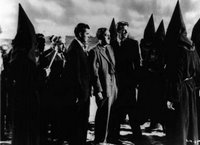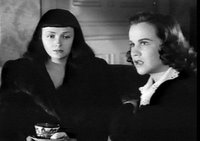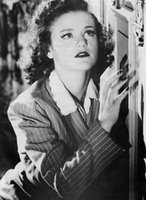
The poetic voodoo drama I Walked with a Zombie (1943) was the second of Val Lewton's horror film series, and the second of three that director Jacques Tourneur helmed for the producer. A reworking of Bronte's Jane Eyre, the story involves nurse Betsy Connell (Francis Dee) accepting a job to care for the wife of Paul Holland (Tom Conway, who also appears in two other Lewton films, in which he plays the same character) on a West Indies island. Mrs. Holland (Christine Gordon) is catatonic, apparently as the result of a tropical disease, but the native islanders believe that she is a zombie--hovering between life and death as the undead.
The literate screenplay by Curt Siodmak and Ardel Wray allows the hidden backstory of the Holland family--Paul Holland, Jessica Holland, and half-brother Wesley Rand (James Ellison)--to slowly emerge. Exposition is sometimes done in unique ways, as in the folk song about the Holland family that a musician plays during two scenes. The dialogue is smart and well-written, the characters efficiently sketched, and the shroud of death and inescapable fate haunt the film like it does most of the Lewton horror series. Paul Holland has some particularly memorable dialogue at the start of the film, about grim reality lurking behind beautiful facade. (Sidenote: Oddly enough, according to the IMDB, the screenplay was the source for a recent and failed third Tales from the Crypt movie, Ritual, which seems to have sunk like a lead brick.)
Though there are several suspense set-pieces, the horror elements are relatively minor. In place of the horrific, however, the film boasts Tourneur's typical visual poetry; this is arguably the most beautiful of his films. Particularly striking is a shot with Betsy Connell framed in a doorway gazing up at a darkened stone stairway that winds above her into concealing shadows. The much-discussed and admired night walk through the sugar cane fields, scored to the eerie whistle of the wind, is also beautifully shot and memorable.
The treatment of voodoo in I Walked with a Zombie is strikingly respectful, especially considering other films of the era (e.g., King of the Zombies). It is treated as a valid belief system, and is never mocked or sensationalized.
The DVD of I Walked with a Zombie pairs it with The Body Snatcher. The transfer is a mixed bag, with several instances of noticeable print damage, and frequent speckling. There is an audio commentary by "film historians" Kim Newman and and Steve Jones, which I did not listen to due to a lack of time. (Seriously, does anyone actually have time to listen to these things?)





